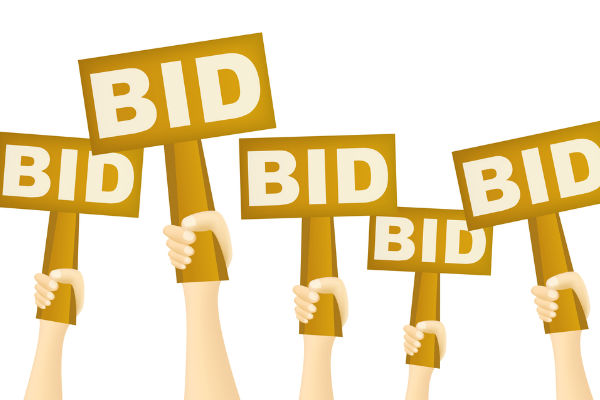There are seven things that a seller needs to do successfully in order to be able to complete the auction selling process. First, you need to have a product by sourcing or creating one. Secondly, you need to price your product wisely. Thirdly, you create a listing that will sell your product. Fourth, is to collect the fee from the buyer. Fifth, is to communicate in all stages of the auction. Sixth, is to deliver or ship the product to the buyer. Lastly, you must complete a follow-up, which is your support after the sale.
Auction sellers have many ways to source products to sell on auction. Garage Sales, Flea Markets and Estate Sales are one source. Finding and buying other peoples junk to turn into your buyers treasures. You want to find items that you think will do well on auction at a price to you that will allow you to make a profit. A source of new items for successful sellers may be the dollar or discount stores. Occasionally a seller may even find a great buy at a department store that will allow it to be sold for a profit. When sourcing products keep in mind that your cost is not just how much you pay to acquire the product; you have to add in how much you have to pay in fees to list and ship the product too. In order to be in profit you have to sell the products for more than the sum total of what it cost you to buy, and sell the product. When deciding on a source make sure that you keep in mind what the fees to sell the item will be and add that to your cost to buy the item and then search the auction site you plan on selling the item on to see if any one else is selling a similar item for more than what the total amount it will cost you to buy and sell the item.

Creating your item is another way of getting products to sell at auction. Many crafts lend themselves to being sold at auction. Crafts such as needlework, blankets, artwork, woodwork, photography, handmade linens, purses, clothing just to name a few things. When you create your product, you control the quality, and appearance of the product. Do your research ahead of time, to be sure there is a market for your creativity.
Pricing is important, because you not only want to cover your costs so that you make a profit, but you want to be competitive with the price so as to sway the customer to purchase your product instead of from your competitor. If you price your product too high you will limit your marketability and if you price too low, you may not make a profit and end up going out of business. When determining price keep in mind that when you state Shipping and Handling fee for the item that most auction houses will allow you to add the cost of postage, packing material, data entry time, and packing time, as well as time spent transporting the item to the shipper. Just be aware to not have your shipping and handling be too much higher than your competitor’s shipping and handling fees as most buyers are now savvy enough to know to add the shipping and handling fee to the price of the item to get the true cost of the product.
Listing the product is what really sells the product. Your salesman so to speak for your product. What you put into your listing has to adequately tell the customer all about the product so that they can make a good buying decision. Your listing should inform, entice the customer to buy, educate the customer all about the product, comfort them so that they will not feel any stress about the purchase, and must also lead the customer to the check out.
There are three important factors to your listing; the Item Title, Item Description, and the Item Details. The Item Title is what brings the customer into your item ad. It is what makes the customer aware that you are selling what they are looking for. The Item Title must contain the keywords that the buyer is using to search for the item. The Item Description must be your buyer’s hands, eyes, and give the customer a clear idea of what it is that they will be receiving when they make the purchase. The Item Description must answer all the questions the buyer has about the product and describe the product so that the customer feels that they know everything they need to know to make a buying decision. Details including size, color, weight, condition (used, new, good, poor), and any warranties. The Details must also let the buyer know about your policy concerning shipping and handling, returns, and when you will ship and how you will ship, or if sold locally, if the customer can pick the product up. This is where you can tell the customer where the item is located, and what payment methods you accept. If you need any hep with writing descriptions check out some samples.
Next the buyer needs to know just how you will be collecting the price of the product. How is the customer to make the purchase? Is there a shopping cart? Can they pay in cash, by check, by credit card? Can they use online payment services like Paypal?
Communication is a very important part of the auction sale process. Contact the buyer as soon as the transaction to buy has been initiated and confirm the purchase, assure the buyer that they have made a good decision to buy. Let the buyer know what payment methods are acceptable and how they are to pay. Ask for the payment, even give an incentive to pay quickly, perhaps a bonus gift for quick payment or same day shipping. After the payment is received, it is a good idea to communicate to the buyer that you have received the payment. You can also let the buyer know when the product has been shipped and how it was shipped. It is also good to let the buyer know when to expect the product to arrive and give any tracking information if available. Thank your customer for the purchase and invite them to purchase from you again.
Follow-up is important to the future purchase potential because a happy, satisfied customer will speak well of your business to others and will return to you the next time they need your product. Follow-up can be in the form of a note asking if they have received their item and if they have any questions or comments concerning their purchase. In the follow-up you can mention any discounts you may give to returning customers or any upcoming sales events. Remember to thank them for their business.




